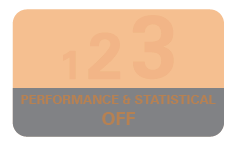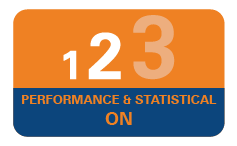Adjudged the most tech-savvy, ICICI Bank has a few new cards up its sleeve
December 24, 2010

Leader In Innovation

TECH-FRIENDLY: Pravir
Kumar Vohra,group chief
technology officer at
ICICI Bank
Step into a triangular-shaped room on the ninth floor of the ICICI Bank headquarters in Mumbai and around two dozen wall-mounted flat screens greet you. The Bridge Room, as it is called, is the centre for monitoring operations and performance dashboards of ICICI Bank across India and 18 international locations. The room keeps track of various functions and departments of the bank including retail assets and liabilities operations, credit and debit cards, ATM performance, customer service, risk management and even human resources. “This is like a hospital ICU and the observation room,” says Pravir Kumar Vohra, group chief technology officer at ICICI Bank. “We always try to find innovative ways to use technology to touch the life of our customers.”
He is bang on target as in the BW-PwC Best Banks Survey 2010, ICICI Bank was adjudged the most tech-friendly as its growth in retail assets have been through non-branch channel.Today, of the bank’s 9 million online internet banking customers, 3.5 million customers use net banking once in a month. “The edge ICICI Bank would have got compared to its peers may be due to the rise in volumes and the increase in number of transactions on a branchless basis,” says Loney Antony, managing director at Prizm Payment Services, who feels, in terms of products and technology, there isn’t much difference among the top 5-7 banks.
The bank had its own share of ups and downs during the meltdown of 2008. In the 18 months since the beginning of 2008, it re-evaluated certain businesses. “In our two-wheeler and personal loans, we started focusing on hygiene and collection, and there was less focus on delivering new product innovation,” says Vohra. “So we used the time to strengthen and make investments in existing systems, and improve our disaster recovery capabilities and process.” ICICI Bank claims to be the most technology efficient bank in terms of cost to income. Says Vohra: “We have leveraged India to deliver technology such that the technology in our US, Canadian and UK branches also run out of India.”
ICICI Bank is the only bank in India that has a machine called cash acceptor — that looks like an ATM — where you can deposit cash. The machine not only counts the cash, but also authenticates the notes and credits the money to your account in real time. The bank plans to install these machines — about 200 right now — at every branch and even in malls.
ICICI Bank has had the internet banking platform since 1994. For the past three years, it has been adding functionality, capabilities and feature sets. “The idea is, whatever routine work a customer is doing, can we automate?” says Vohra. Two years ago, ICICI Bank was the first bank that allowed you to pull money from your account in another bank. Now the bank has leveraged its product called Money to India, by making it Money to World. Interestingly, customers of another bank could log into ICICI Bank’s website, give the details of the other bank as well as the beneficiary’s name and bank details, and ICICI Bank could pull money from any bank and remit anywhere in India. Remittance is a huge business for ICICI Bank. “We are trying to remit money to the world, be it Bangladesh or Philippines,” says Vohra.
In rural areas, it has partnered with Financial Inclusion Network & Operations to provide banking facilities through a low-cost platform. The bank gets in touch with a local commission agent in a village that has a mobile phone that works as an extended teller to receive and make payments. “In the whole paradigm of the bank, technology is a critical component,” says Vohra. “Many feel we are early movers in new technology, but don’t forget we are early movers because we see business sense.”
A year and a half ago, the bank also launched a branchless banking initiative called B2, where you can do everything electronically. “We have launched actual account opening online,” says Vohra. However it is not completely branchless, as regulation requires banks in India to take physical signatures of their customers.
Meanwhile technology obsolescence is the greatest challenge for ICICI Bank, which is why its general model is to buy rather than build. However, outsourcing puts the bank at the mercy of its vendors and service providers. “We have not outsourced our mind,” says Vohra. “We have control over the technology architecture. As long as you can visualise and control the blend, it’s a win-win.”
The bank’s philosophy has been to manage the risk — be conscious of risk and have a back-up plan to work around it. Says Vohra: “After all, the business of banking is the business of calculating risk. All the lending, the money transfer business is all about taking calculated risk. You can’t run away from risks, you have to evaluate it, quantify it, come up with alternative plans and test those plans.”
The bank also has strong risk management parameters in place. It is an invisible service. The bank may not send an alert, but it can stop transactions. It identifies the machines from which the customer regularly does his transactions. And every transaction is assigned a score, which includes place of transaction as well as the amount. If the system detects a transaction to be very risky, it blocks the transaction. However, the bank ensures genuine customers don’t get stranded. “We have no case where a fraud was perpetuated without human negligence or collusion,” says Vohra. “But if you engineer technology well, your incidence of fraud is no higher than manual. But your ability to diagnose and troubleshooting can be much higher.”
Going ahead, the biggest challenge for ICICI Bank is to retain its leadership in technology and make investments judiciously to sustain that advantage. “No one knows what new technology will come in the future. What banks are doing today on the mobile, five years ago we wouldn’t have thought possible,” says Vohra. “The challenge is, as the organisation becomes larger, the time to deliver takes longer and longer.” Recently, Vohra has directed his team to do development on the Android platform, as he feels that to be the technology for the future. Within a year we will see if he is right or not.














